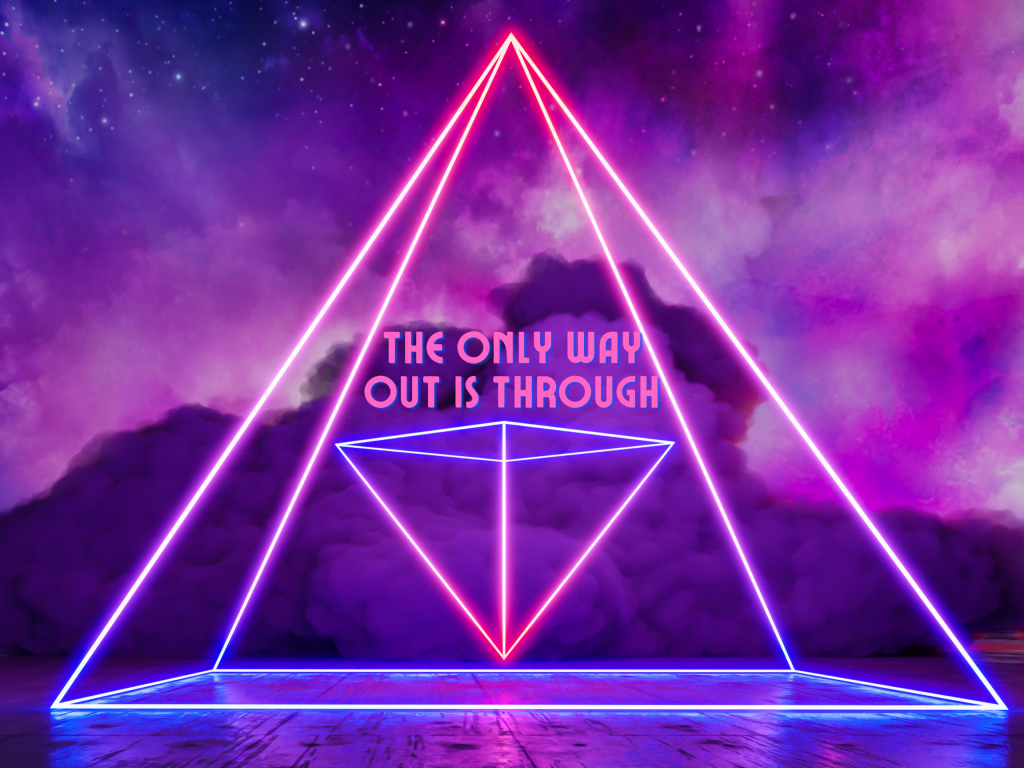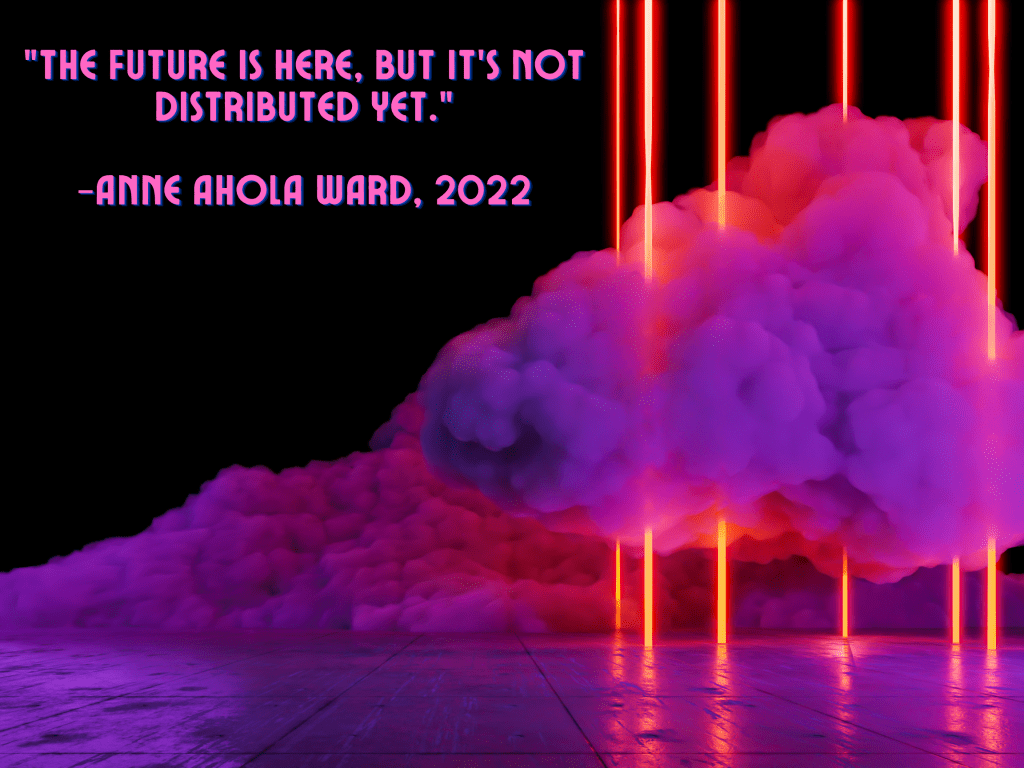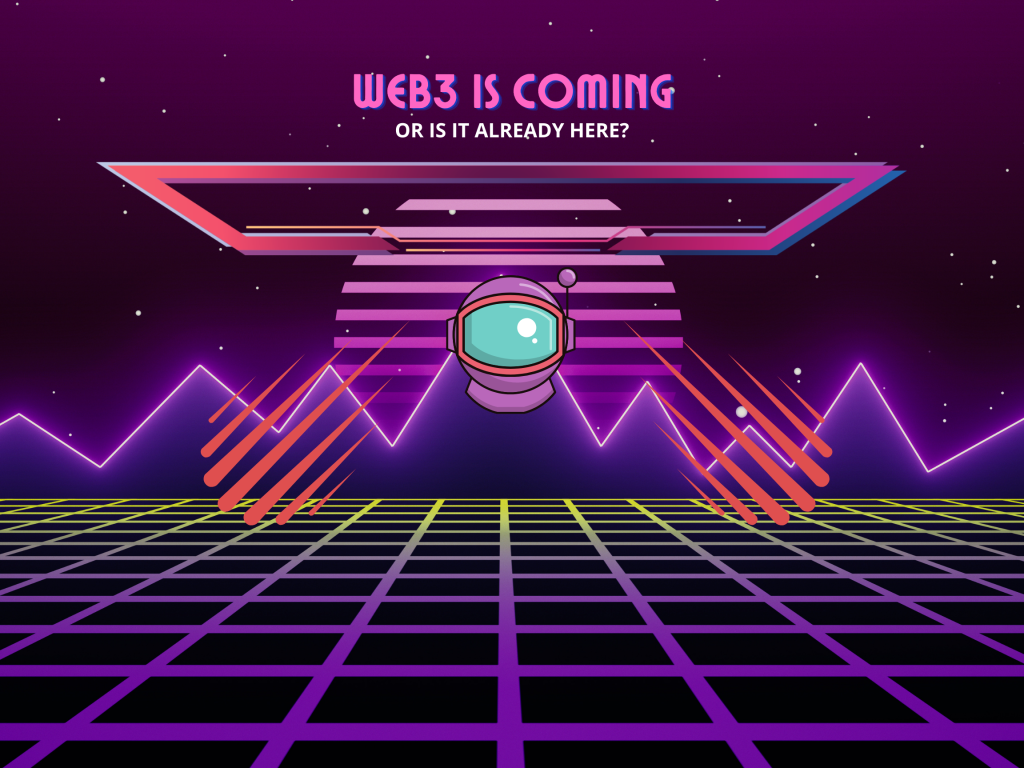Web3 is on track to become the buzzword of the decade (sorry, metaverse). In short, application developers and marketers alike are converging on Web3 as the next stage in the evolution of the internet. In order to look forward, you must first at least glance backward. To prognosticate the future, we’ll need to examine the evolution.

The birth of the internet
At the dawn of the internet, there was no “Web.” There were just disparate protocols comprising the early internet — a decentralized network of computers that could send and receive information and theoretically couldn’t be shut down without shutting down every computer on the network. DARPA designed it to withstand a nuclear war, so they wanted it to be as resilient as possible and never lose data. Protocols were meant to be shared resources that anyone could access. Early protocols included FTP for file transfers and GOPHER for viewing an early form of linked hypertext sites. At this stage, if you wanted to view images, you had to download them and view them separately.
In the early days, only computer enthusiasts and application developers understood how to use the internet. People owned computers without modems, it’s hard to grok that they didn’t always come with the internet as a built-in capability. Access was often limited to academics and students, not the general public. Because of this, only a handful of companies were able to build media platforms on top of the foundation of the internet, and companies such as America Online and Compuserve developed primordial proprietary social media platforms. Democratization at this point had fallen short.
The dawn of Web 1.0
Then, in 1989, a British scientist (and freaking legend) named Tim Berners-Lee came up with the idea of a more flexible protocol than GOPHER, and used it to build another layer on top of the internet that would make it easy for scientists and academics to share information relatively easily. A few years later in 1993, Berners-Lee released open-source code for the world’s first web browser. The “Mesh” browser was later dubbed the “WorldWideWeb.” Huzzah!
Ostensibly, this can be thought of as Web 1.0. For the most part, Web 1.0 allowed the few to share information with the many — “the few” being anyone who could build a website and “the many” being the people who used the websites. If you didn’t have a dedicated machine connected to the internet 24/7, and you didn’t know anyone who let you run a server, you were still out of luck.
The first few browsers didn’t look very different from Gopher, in fact, one text browser, lynx, was popular for years and co-existed with early browsers. But what really blew the lid off was the release of Netscape 1.0, the first browser that let you see text *and* images at the *same time* without the user having to do anything special. The web became synonymous with the internet in popular culture. Hosting packages that anyone could purchase became commonly available. It was possible to interact with Web 1.0 sites using forms, but most websites were still passive entities like reading the newspaper, but with hyperlinks. This was a golden time for geeks and normals alike, but I fondly remember not being able to do anything else on the computer while I was printing to my dot-matrix… Background printing was a glorious thing that came a little later.

The evolution of Web 2.0
The next stage of evolution, Web 2.0, was the advent of Javascript, the language that ran in every browser. Now developers didn’t need to rely on a form to interact with users, they could actually program the browser like it was its own computer, something mainframe advocates had been talking about since the 1960s. Instead of every type of computer having a different program to do the same thing, a website would look and act the same for every type of computer. This ushered in the advent of the ability of the many to share information with the many. Web 1.0 had developed the technology to make documents *look* and feel the same across platforms, now in Web 2.0, these passive documents were gaining active intelligence of their own that interacted with users in new and exciting ways. This ushered in the advent of the ability of the many to share information with the many. Early sites that facilitated user-generated content were applications like blogs, review sites, or fan clubs, but eventually, these blossomed into entire social media ecosystems that included real-time interactions and video sharing.
The popularity of websites exploded, such that a popular site could actually get so famous that it went down due to traffic (…the thundering herd).

But while individual websites proliferated, web hosting companies underwent rapid consolidation, so the end result was that you actually had more centralization than before the web, so the resiliency was lost. Of course, you could use a smaller server, or even host it yourself, but since the popularity of websites had exploded, your site could actually get so famous that it went down due to traffic (the thundering herd), becoming a victim of its own success. Not very resilient.
To add to the confusion, when payment processors evolved to allow people to use credit cards over the web, they were not initially trusted by the average person. To combat this image, the payment gateways became extremely conservative about who was and was not allowed to accept credit cards online. This caused even more consolidation around web marketing and sales since you had to be a certain size or have a long history to even be allowed to go through a gateway, which of course was another middleman that took a cut of the action. The dot com boom came and went, but then web 2.0 came out of the ashes of that time.
There were a few sad weird years for us tech folk after the dot com bust, I was just starting out my career in the early 2000s and my future in tech felt so, so uncertain. But things evolved rapidly and user-generated content and social media became a thing. Everyone got a voice and many of us used it. The information floweth! Yay? Everyone also got surveilled, so so HARD. When everything you do during your awake time is basically online, big tech and marketers alike were always going to track it. In the early days and beyond I was one of those folks and have spent many years since trying to atone for those sins. From Foucalt to Orwell, they tried to warn us what our futures would become. Things got messy.
All hope is not lost, because it will never be fully lost. We’ll always find hope again.

Here she comes, the gentle unfurling of Web3
The Web was built on top of the internet, and Web3 is getting built on the backs of blockchains. Blockchains are just databases that are public, and I hate how this term intimidates people. In short, blockchains allow users to create, own and transfer ownership of digital assets such as cryptocurrencies and NFTs. Boom. That’s all it is. Web3 (to me) is mostly a clever rebranding of crypto, but hey, if this is what gets everyone feeling good about it, I’m into it. I actually have loved seeing people who’ve never ever expressed any iota of interest in crypto before subtly change their Twitter names to include .eth. You go, girl!
Under Web 2.0’s reign, money had to pass through private banks. With Web3, money can be transferred directly from peer to peer without having to cut a bank in on the action. Centralized services like Google are still going to exist, but the idea is to start chipping away at the power structures and take us back to our past open-source days.
Cryptocurrencies are basically programmable money. Programs called “smart contracts” are developed to automate transfers of digital assets when the conditions of the contract are met. Again, with no need to involve a middleman. The single greatest achievement of the blockchain (again, a glorified database) is to help establish trust between counterparties.
Web3 can be thought of as the “decentralized web.” Centralized means the control is held by individual companies, but decentralized takes the power and distributes it. It also distributes the looming risk… “Decentralization” is a more expensive term for open source, and yes, we were here before. Things started out open, but when we were staring down this road in the 90s, centralization won. Websites are mostly hosted by companies that can choose to censor or take the sites down any time they want for any reason. The beauty of smart contracts is that they can be used to build applications that run in a distributed fashion, on a decentralized network that’s owned by no one. Truly no one — no corporation, no government — can sensor or shut them down.
Web3 allows for digital possessions
Digital collectibles are a new thing for us to collect and hoard! One of the key innovations of Web3 is that it facilitates digital property as well as real estate. You’re probably thinking, OK, what does that mean? Am I missing out? Maybe you’ve seen how Snoop Dogg is developing his real estate empire in the metaverse and people are spending gobs of money to own space near him. Think of it like this: a deed to a plot of land is a contract that spells out who created the property, the details of the property, and the ownership history of the property. The land itself is immutable (just like a ledger, bam). But in order to transfer ownership of the land, we first need to transfer ownership of the deed. PSA: Do NOT mortgage your real home to buy a virtual one, we’re not there yet! The biggest con of the metaverse is getting trapped into thinking it’s just one world (Facebook’s world), when really it’s a network of virtual worlds, imagined or otherwise.
Blockchain technology and smart contracts allow for the creation of immutable digital assets called NFTs (non-fungible tokens). NFTs are similar to deeds. FTs or fungible tokens are non-unique and function like regular money, they’re swappable. I’ll spare you my rant about why this definition of FTs is misleading (US dollars have serial numbers and are therefore unique).
Because smart contracts are distributed, they cannot be tampered with. That means the authenticity and the ownership of an asset spelled out in a smart contract can be verified forever and ever (theoretically). The asset itself can be anything — a digital image, a song, a video, a poem, a book, or even a physical object. Then we have DAO’s or autonomous organizations governed by smart contracts, which means Web3 is cooking with gas! Coincidentally, we now have robots cooking with gas.

Great, just tell us what are Web3’s tangible capabilities
The great achievement of this next generation of the web is to help establish trust between counterparties, to be trustless. That’s the key selling point of the blockchain. Let’s look at a quick example.
Web 2.0 allowed for the development of computer games where players could theoretically own assets used in the game. Think Second Life. For example, let’s say there’s a robot fighting/collecting game and users can own, create, buy, and sell different robots. The robots that win the most battles become the most valuable robots. However, if the game goes away (shut down by the company, the government, or a hacker) all the robots go away with it. The robots that users have put their hard-earned time and money into have no value outside of the game.
With Web3, the robots live on the blockchain forever (for the life of the blockchain). If the computer game goes away, the player still owns the robots. And, theoretically, the robots could be imported into another compatible robot battle/collecting game that uses the same blockchain.
Cryptocurrencies also allow for a myriad of decentralized financial services to be built on Web3, which to me is one of the most exciting areas of crypto right now, DeFi. People can save, borrow, and lend money directly to one another without the need for a bank. Merchants can offer cashback rewards that can be spent with any other merchant on the blockchain — again, without the need for a bank. This means fewer fees, more opportunities for seamless cross-border transactions, and so on.

Not all websites of the future will be considered Web3. However, those that embrace it and do take advantage of the possibilities of Web3 will have far more benefits than your everyday website. The news right now for the industry isn’t always good, there’s a ton of fraud and hackers seem to be running amok. It won’t always be this way. We’ve gotten used to centralized services just handling security issues for us. There has always been a support forum or a number to call when you ran into issues. No such support exists for Web3, but it is coming. We are now living in the pioneer days, traversing the plains of the internet yet again while shooting each other hopeful glances. The near future is uncertain, but the possibilities for Web3 are infinite and only limited by the human imagination.
Thank you for indulging me in this trip down memory lane, you can find me lurking on Twitter or even Mastodon if that’s what you’re into.

